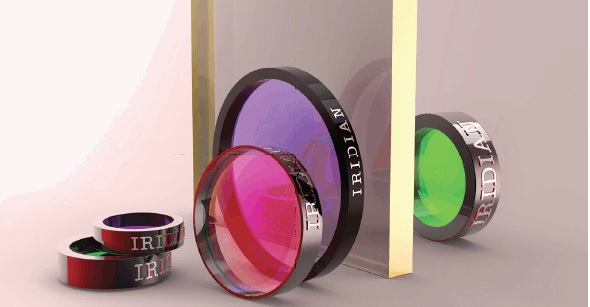Raman spectroscopy is one of the most widely used quantitative and qualitative spectroscopic techniques and is compatible with molecular and material samples. In a Raman experiment, the frequencies of the oscillations of the chemical bonds are measured, and the exact position and intensity of these frequencies give a sample a unique Raman ‘fingerprint’ that can be used for identification.
The local chemical environment around an atom strongly influences the exact frequency at which a bond vibrates, making Raman spectroscopy an incredibly sensitive method for identifying the functional groups present in a sample. Typical applications of Raman spectroscopy include pharmaceutical development and quality control, materials analysis, and biomedical imaging.1
Raman Spectrometers
One of the key challenges in Raman spectroscopy is balancing the inherently weak Raman effect against background, competing fluorescent processes. The intensity of a Raman signal scales with 1/λ4 – where λ is the excitation wavelength used, but the shorter the excitation wavelength, the greater the probability of seeing fluorescence from a sample.
As part of spectrometer design in Raman spectroscopy, filters play an important role. Several filter types are used in Raman instruments to remove unwanted scattering signals, improve the signal-to-noise in measurements, and suppress any artifacts.
Common filter types used in Raman spectroscopy include laser line, notch, long and short wave pass filters.
Laser Line Filters
Raman spectroscopy relies on intense laser sources to generate sufficient signal levels. The Raman scattered light is not dependent on a specific wavelength (unlike fluorescence excitation) so it is important that only a narrow and specific excitation wavelength reaches the sample under test. A laser line filter in Raman spectroscopy is selected with a central wavelength to match the excitation source and will remove any unwanted “off-center wavelength” side band contributions from the laser.
Notch Filters
Notch filters are sometimes called band-stop filters and are used in the detection path to block or attenuate a given wavelength region in Raman spectroscopy corresponding to the laser line wavelength. All other wavelengths outside of the blocked region should be transmitted as these will correspond to the Raman scattered signal.
Long and Short Wave Pass Filters
Long pass edge filters are used in Raman spectroscopy to help suppress the undesired Rayleigh scattered signal laser light and transmit light from the sample that has been Raman scattered at lower energies or longer wavelengths. This is achieved by only transmitting wavelengths above a given blocking wavelength. For such filters, an ultra-steep cut-on is desirable, and a well-designed filter can mean the ability to recover more of the crucial fingerprint region in Raman spectroscopy. This spectral region is considered to be most beneficial for sample identification.
Short wave pass filters are essentially the inverse of long pass edge filters. Still, they are used when it is desirable to recover the anti-Stokes scattering rather than the longer wavelength Stokes scattering. An ideal short-pass edge filter will have many of the same characteristics as the long pass, but the main difference is that a short pass will block all frequencies above the given cut-on wavelength. Both filters need high ODs in the blocked regions to provide good contrast.
References and Further Reading
- Jones, R. R., Hooper, D. C., Zhang, L., Wolverson, D., & Valev, V. K. (2019). Raman Techniques : Fundamentals and Frontiers. Nanoscale Research Lett, 14, 231. https://doi.org/10.1186/s11671-019-3039-2

